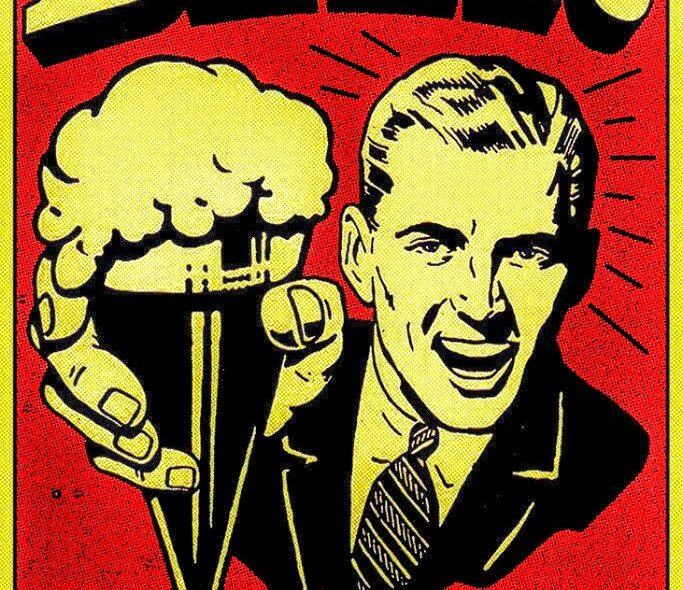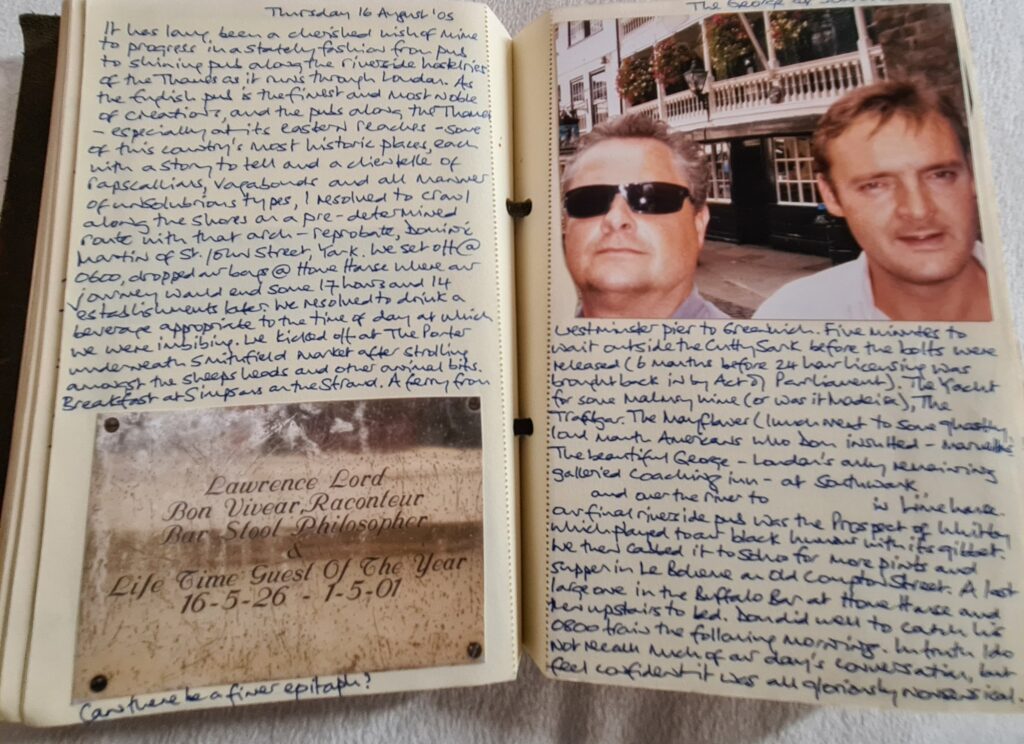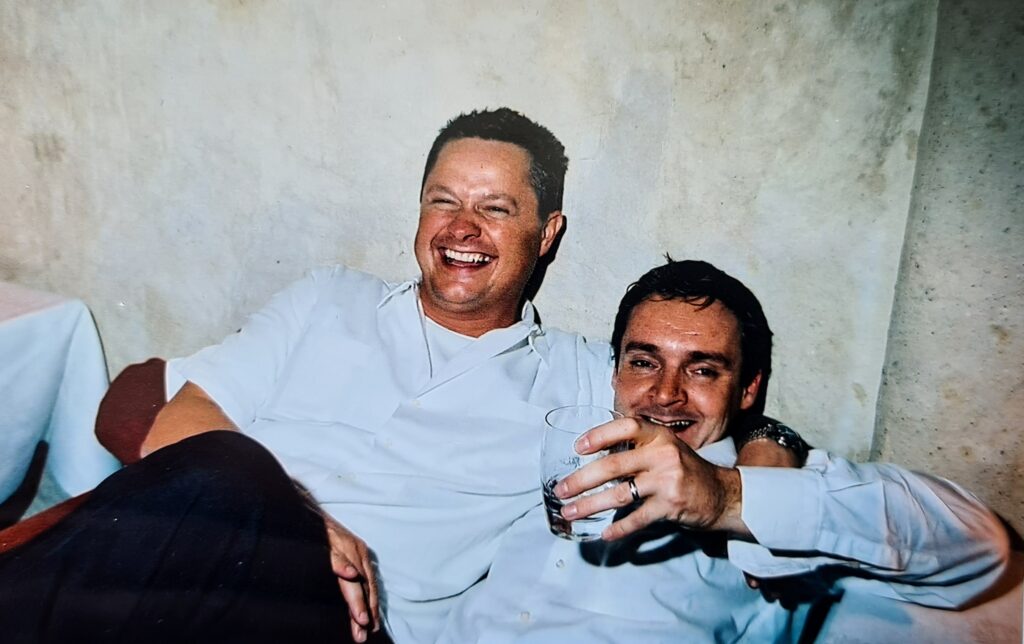Beer. Beer has been companion from the age of sixteen when I first discovered the stuff at Hudson’s the pub in York where, inexplicably, all us underaged drinkers were served every night in our sixth form years. In the holidays I drank at the Windmill in Linton, carrying on a long family tradition that had been going since the 1950s. The Bay Horse was on the corner opposite main school and our boarding house. We played pool there and met up with our day school friends. Not one of these pubs blinked an eye. We were never asked for ID and were good, regular customers. It would be unthinkable now and I do not think our parents would have been particularly impressed with the laxity of oversight by our housemasters or the school generally. But having lubricated our nights throughout the two years of A levels, happily smoking inside and downing pints, beer became a staple. In my 40 years of drinking I suspect my average daily consumption would even out at a pint a day, every day. That’s well over 14,000 pints, give or take. But, like busses, beer often comes along in threes. Or fours, fives and sixes. Rarely in ones, not until later in life, anyway. If the sixth form at boarding school was my nursery slopes, university was my black runs. At university it is less about quality and more about quantity. Although there was a CAMERA real ale festival in the students’ union every year, where beardy men stacked up metal barrels with fiercely strong, reputable brews such Old Peculiar and Hooky. Three pints of these molasses-thick brews at lunchtime wrote off any chance of serious study for the afternoon. Indeed, afternoons were often spent in alcohol-induced stupor. And then evening would come and it was back to the bar.
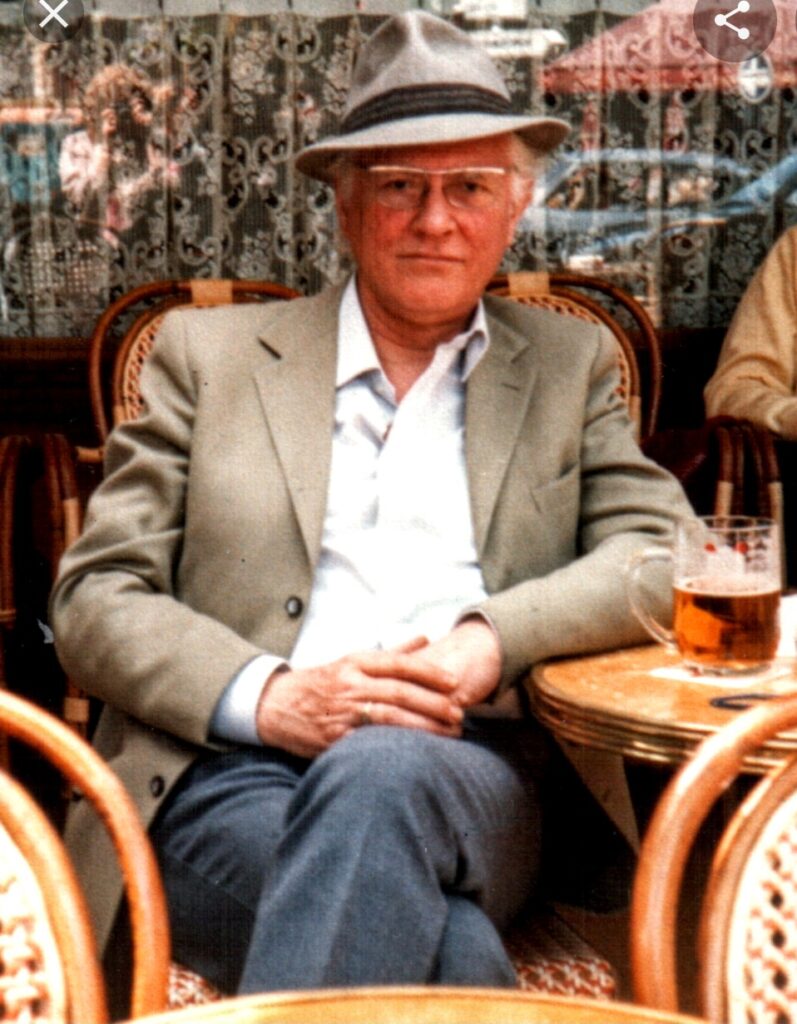
We took our cue for drinking from our faculty heads – Professor Allen Phillips Griffiths and his Jesuit sidekick, Cyril Barrett. They were both prodigious imbibers and at the inaugural session to welcome us to the Philosophy school they pleaded the case that we would all learn a lot more from arguing in the union bars over a pint than we would in lectures, and they heartily recommended we did this. We took them at their word, with the result that I had to resit my logic exams over the summer just to cling on to my place at Warwick. We took our bar studies seriously, several times being attacked and beaten up by other-minded fellow drinkers from the left of the political spectrum. One morning I awoke with a set of black eyes, earned in the Student Union Market bar, for singing Unionist songs and wearing black tie, and attended my politics tutorial with Professor Jim Bulpitt with the people who had set on me the previous night. It was a bear pit.
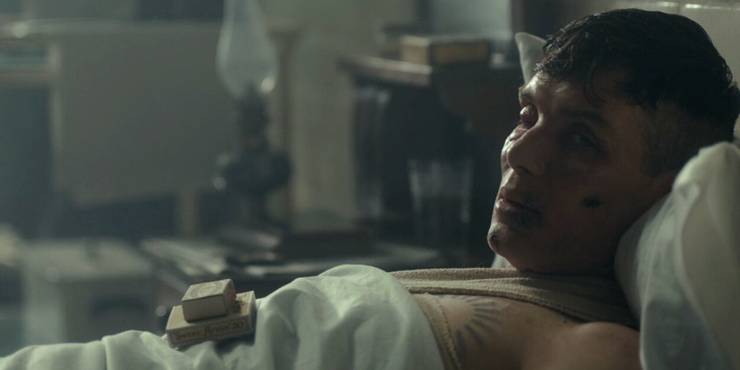
University was drinking. It was subsidised bars and pints-a-plenty. Bitter, lager, Guinness, mild, cider, scrumpy, pints of Pernod – anything that was on promotion at a pound a pint. The Pernod was a mistake. I have never been able to stomach it ever since. It was seats and tables sticky with beer and sweat. It was live music every night. It was pints at Union General Meetings. Dinner. Lunch. Even breakfast. All served with beer. It was, one memorable evening, dinner in a first floor communal kitchen in a Hall of Residence where the washing up consisted of chucking every plate, glass, mug and all the knives, forks and spoons out of the window. You don’t do that when you’re sober. It was the Westwood Mingle – an all day pub crawl around the arse end of Coventry where our accommodation was located – starting in a working mens pub and downing pints in one immediately followed by a tactical. A ‘tactical’ is a tactical chunder – making yourself sick in order to free up room for more beer. It all ended in the evening at a disco where everyone tried to “box off” whoever was willing. Beer makes for strange bed fellows.

In the summer holidays at the end of my second year I flew to America for three months on a BUNAC exchange. BUNAC is the British Universities North America Club and is an exchange programme where they come over here and we go over there for a summer as students to work, explore and experience another culture. We get the better deal. Some go to work in American Summer Camps – my girlfriend at the time did that. It seemed the worst option. Who wants to spend your whole summer looking after with brattish kids and being “Owl Chief”? Not me. Ripper, my uni companion on this trip, opted instead for finding work at Faneuil Hall in Boston, skinning fish and serving subs (giant sandwiches). Ok, it doesn’t sound glamorous, does it? But it was magnificent. Our work friends were all college students too, working their way through university like all US students do, by taking on summer jobs waiting tables. With our British accents, which we obviously hammed up, we were mini celebs and we paid for only five nights’ accommodation in 60 days. Every night, after our shift ended at 11pm and we had taken all the rotting seafood bones and scales to the dumpster, we joined our crew to go drinking at Serendipity, the bar over the other side of the Hall. All the restaurant crews met up here and the drinking went on until the small hours. Ripper and I – like all the other kids – had to be up and back at our jobs by 9am. We partied on regardless. Beer got us started – this is where I developed a taste for Sam Adams and Amstel, which was all the vogue then – but being Brits, we avoided the dreadful Bass that our US friends worshipped: served ice cold, supposedly proper British beer. The beers were chased down with Hawaiian sea breezes, a cocktail of vodka and cranberry juice. After two months in Boston, Rip, me and a waitress we were both in love with called Cindi Rittenhaus (who was relocating to San Francisco), took a “Driveaway” car across the states to California. We sampled several beers on the way through New York State, Kansas, Colorado and into California where we fell for Anchor Steam. But it was a dry old ship in Salt Lake City, capital of the Mormon and abstentionist state of Utah. Nevada wasn’t much better.

After university I began work and discovered those lovely Victorian London pubs. London Pride. Then I moved north to Tetley-land in Leeds. I was hired to sell Yorkshire TV’s experiment in through the night broadcasting, which was called MusicBox. Odd to remember that TV transmission on just 4 channels stopped promptly at midnight in the 1980s. But the launch kept getting delayed so I had nothing else to do than go to the (again subsidised) bar in YTV Studios on the Kirkstall Road and get smashed on Guinness. Four or five pints was the usual lunchtime amount. My regional sales colleagues thought nothing of this; it was standard practise and often they would either drive off on their rounds to talk to the advertising agencies of Leeds or to clients or, in one case, to fly his two seater plane for a little afternoon’s light entertainment. I went up with him several times. We were both on the clock but this was normal. Business was, when MusicBox eventually came on stream, carried out at the Moortown Mecca, The Flying Pizza – restaurant to the media moguls of the North. Starting with a Peroni – unimaginably exotic in the 1980s – and moving on to a bottle or two of Frascati. Frascati was everywhere then. Now, it has virtually disappeared.

Yorkshire ale is wonderful. There are so many regional brewers. Masham gave us Theakstons. John Smith was famous outside Yorkshire for its advertising (done by BMP, the agency I would work for 10 years after) but which never ran in the county itself for fear of upsetting the locals. John Smith’s rival brother, Samuel Smith, brewed in the same small town, Tadcaster, but the beer is poor. I am not a Samuel Smith fan, in spite of the quaint packaging of yesteryear they wrap around their gaseous brew. Timothy Taylors – Landlord is a great beer – from the Bradford area. And my beloved Tetley, with its foaming head. Tetley was served in the Queen Anne pub at the back of the YTV studios and we delighted in taking visitors from the London sales office who had to show a leg “up North” every now and then – just to show willing, like – for a lunch of ‘pie and peas’. The look of revulsion on their faces as they were confronted with a hot pork pie drowning in mushy peas and topped off with vinegary mint sauce was always worth the wait. Tetley was poured from the font so that the server kept pulling and pulling in order to fill the pint and attain that legendary Yorkshire head on the pint that Northerners love and Southerners (where beer is served without a head) do not understand. But in order to achieve this peak-pint performance, the beer that spilled over the glass and hands of the pourer was syphoned back into the barrel to be recycled rather than disappearing for ever into the drip tray. Meaning that whatever germs of nail clippings were washed off the pourer’s hands went straight into the next pint. Lovely. What we called “flavour”. They aren’t allowed to do that anymore.
I returned to London in 1988 to begin working in advertising. London agency life was fuelled by beer (and wine and spirits – just like in the TV series Mad Men, only with English accents. It was especially so in the 1970s and 1980s. The best agencies had their own bars – we had one in Lowe Howard-Spink (subsidised again, naturally) where Whitbread was a client. Pints of Stella were de rigeur (we produced the Jean de Florette cinema ads and the brilliant line that made the beer famous: Reassuringly expensive) and I remember my Account director boss popping his head around my office door at 8pm on a Friday night as I was being sick into my wastepaper basket. This was perfectly normal. We used to congregate at the Grenadier on Friday lunchtimes and get hammered. Work finished at midday. The afternoon was for drinking. Or lunch. Preferably both. And people would start leaving for home at around 8.30pm.

Pubs fortunate enough to be located near ad agencies in London were sitting on a goldmine. Quite often, the chosen watering hole was grotty. The nearest pub to Lowe’s in its salubrious Bowater House offices in Knightsbridge was the ominously nicknamed “Stabber’s Arms” – so named because one unlucky drinker had been attacked there with a knife. Collett’s pub in Euston was no nicer. BMP’s was the sort of purpose built pub you find on dangerous housing estates of tower blocks in inner London areas. But whilst the venues were seedy, the company was invariably brilliant. Any excuse for a pint. A pitch win. A pitch loss. A leaving do. A new recruit. A new campaign. A Thursday night. One year, when BMP won the Foster’s beer account, the management took the entire agency on a booze train from Paddington to Bristol. No stops. No passengers other than staffers. Just one long drinking journey with an open free bar the whole way there and back. Commuters waiting on the platform at Reading and other stops down the line watched enviously as eight carriages’ worth of beautiful young things sped past at light speed in a blur of Foster’s induced partying and largesse.
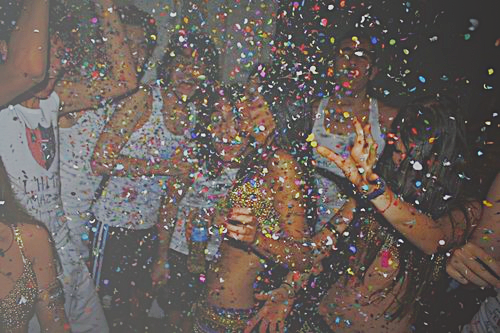
Over the course of my career in advertising, I have been brand steward for a number of beer brands. Some lovely and some dreadful. The illustrious Marston’s Pedigree from Burton on Trent. A truly exceptional pint and we sold the campaign to the live reincarnation of the founder of the brewery in the form of his great grandson, now Chairman, be-whiskered and sitting directly under an imposing portrait of his forebear in the oak panelled Boardroom.
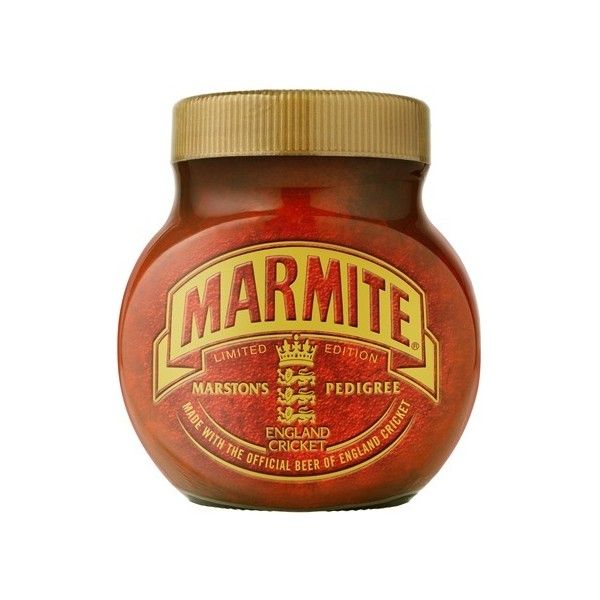
Newcastle Brown Ale, iconic, fizzy, filthy brew but a great brand. I remember being put on it as Board Account Director and flying up to Newcastle for the obligatory tour of the on-trade. We began in a Geordie Working Men’s Club. I wore my best London adman uniform: black polo neck top, dark grey trousers, shiny leather Oxfords on my feet. Everyone else was in their Friday night finery. I might as well have been wearing a badge that shouted “I’m a homosexual Londoner”. The looks I got. I felt like Dicky Beasley, the pony-tailed boy wonder from Viz comic whose dream was to grow up and become an advertising account executive. A ponce. Men holding three pints in their hands stopped on their way back from the bar to scan me from my toes to my hairstyle. Their scorn was evident in the sneering which accompanied a small but sad and disapproving shake of the head as they passed me by which effectively passed their unspoken verdict: “Puff” or “Wanker”. It was a tough night. Made worse by having to drink that shitty bottled filth, Newcastle Brown Ale. The Scottish & Newcastle conglomerate which owned Newky Brown also owned a variety of other second rate beers: Harp Lager, Gillsepie’s (a made up brand to compete with the wildly successful Caffrey’s Irish Ale) and 80 Shilling. All dreadful.

The volume days diminished when my children arrived. They couldn’t drink. This isn’t necessarily a drawback. My sisters remember being left outside the aforementioned Windmill pub in Linton with a bottle of pop and a bag of crisps whilst my father and their mother drank inside with their crowd of friends. But they couldn’t afford the rounds, so drinking became, by and large, a home hobby. Our family holidays in Majorca, at the C’an Canonge finca near Pollenca town, topped us up with rosado, white and red wine and a nice San Miguel or Estrella at the shank of the day to get us started. Beer with pistachios is a great way to begin the evening, and a good appetite whetter for the wine and brandy to come later.
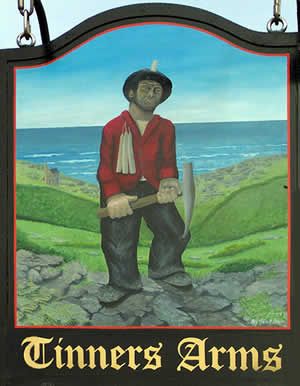
Our move from London to Penzance brought in a whole new raft of beers, most particularly Doombar, which still tastes its best on pump in Cornwall although it is now seemingly omnipresent. The St. Austell beers are good and I enjoyed many a pint watching the rugby internationals in our Pz local pub and also celebrating wins of new business at one of two pubs where I would make a solitary pilgrimage: the beautiful Tinner’s Arms in Zennor for when I won a brand new client for our consultancy business, Caffeine, and the Halzephron Inn on the Lizard for when I won more assignments from an existing client. (You see? There was method in the madness.) On these trips, I would have just one pint of ‘Doom’ and raise my glass to the client. Along with lunch; always with food. There were other compensations for living in Cornwall: the Ship in Porthleven, the Gurnard’s Head near LandsEnd, the Maltsters Arms in Chapel Amble and the St. Kew Inn – being possibly my favourite pub in the world alongside the Craven Arms in Wharfedale. All brilliant purveyors of a glorious pint.
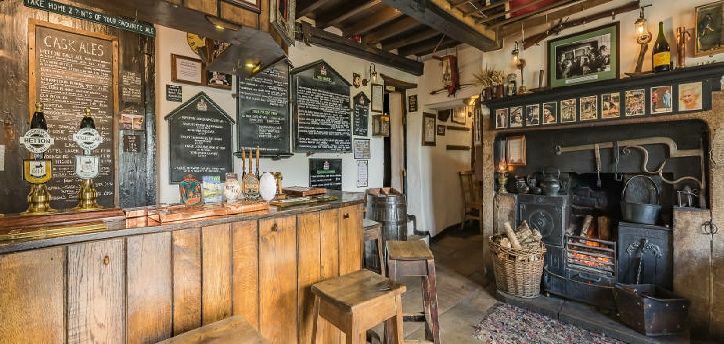
In truth, I am never happier than when in a pub and an hour or so in the company of a newspaper, a proper lunch and a pint is my idea of Heaven. I have never been miserable in a pub, even if I entered one in such a mood. The variety of all these hostelries juxtaposed with the familiarity of the protocols and the rituals of pub going, make them all a second home, and I can spot a great pub with a well trained glance. Thursday evenings at the Tinner’s in the company of some 23 musicians playing the Cornish pipes, guitars, fiddles and an array of instruments is a magical experience. And to top off your evening’s drinking with a night cap dram of whisky and a toddle over the courtyard to the cosy bedroom is a blissful end to any day and much to be recommended.
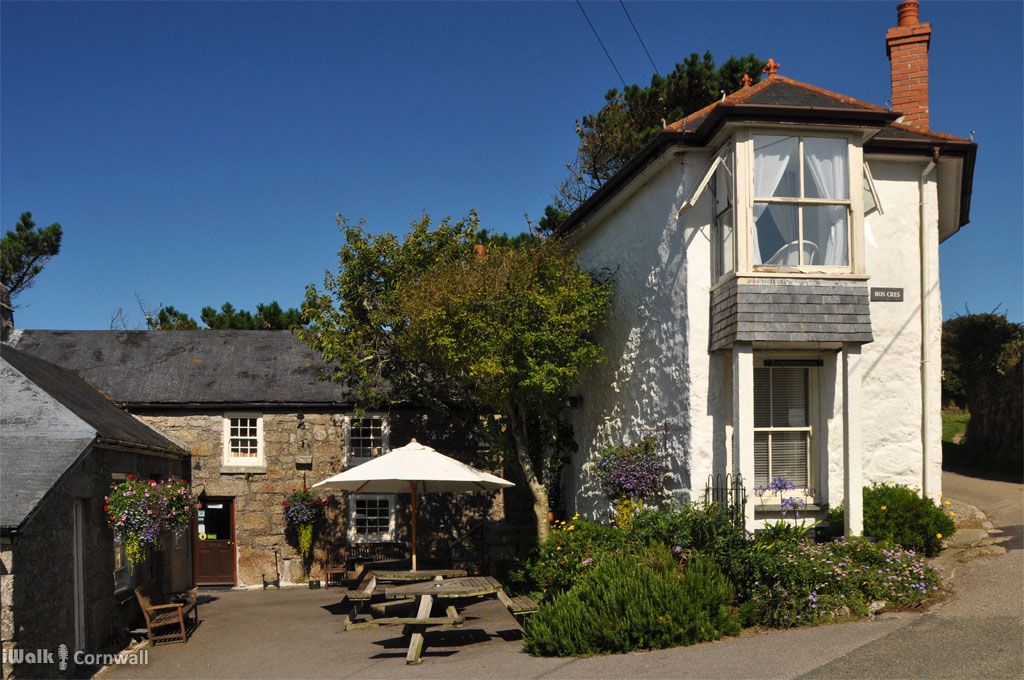
Holidays in Thorpeness every summer were also punctuated withe pints. Although dinner every evening, cooked by all of us in turn, staying in the different households scattered through the village, was always a wine affair, the Dolphin pub in Thorpe plus the Cross Keys and White Hart in Aldeburgh all served Southwold’s Adnam’s stable of beers. And Adnams Bitter is a lovely beer.
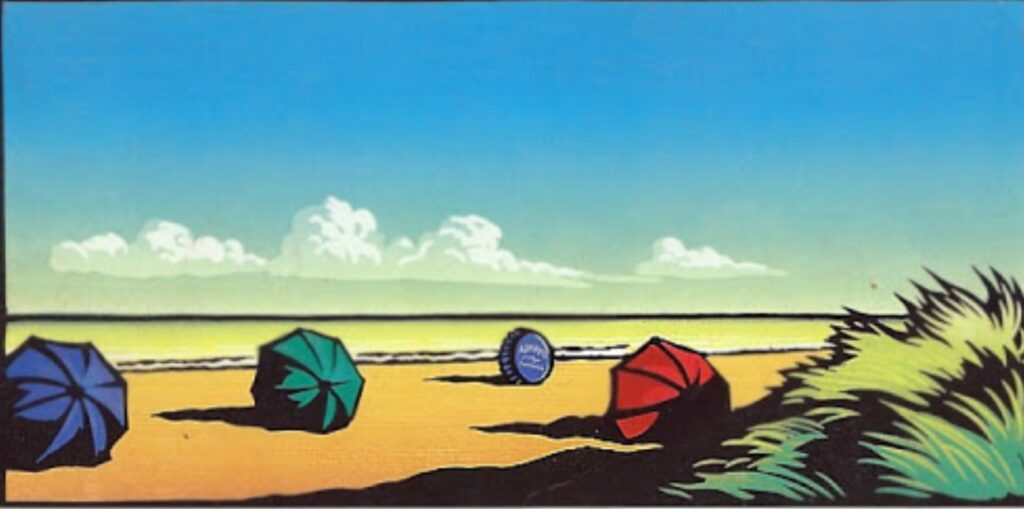
It was also in Thorpeness that I always had a pint of bitter shandy in the Clubhouse with dad after a round of golf. I always associate shandy with dad as a consequence. We transferred this ritual north when we played at Wetherby, his club. Dad always had a pint of gingerbeer shandy (bitter and ginger beer, half and half), where my preference has always been for lemonade shandy.

On the way to Thorpeness, journeying south from Yorkshire, we always new we were near when we started to see Tolly Cobbold pubs from the car. This meant we were getting near. It also made us laugh, as it sounded so funny to us as a name. Tolly has passed into history now. And in later years, I have grown to think of the Bury St. Edmunds brewer, Greene King, as maker of probably my favourite ale: Abbot Ale, winner of the prestigious Monde Gold Award in 2014. Abbot is best served at The George pub in Alfriston, Sussex.
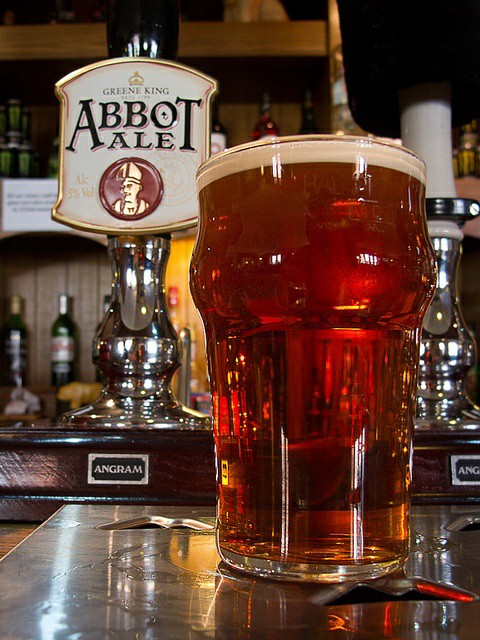
Living in Sussex means there are lots of Harvey’s pubs and Harvey’s is another lovely hoppy ale. My favourite place to sup a pint is the John Harvey Tavern, adjacent to the brewery by the river in Lewes, where the beer hails from originally. Harvey’s shares Adnam’s Cambridge blue livery – perhaps that is why I am so taken with them both, as I am a sucker for this colour.
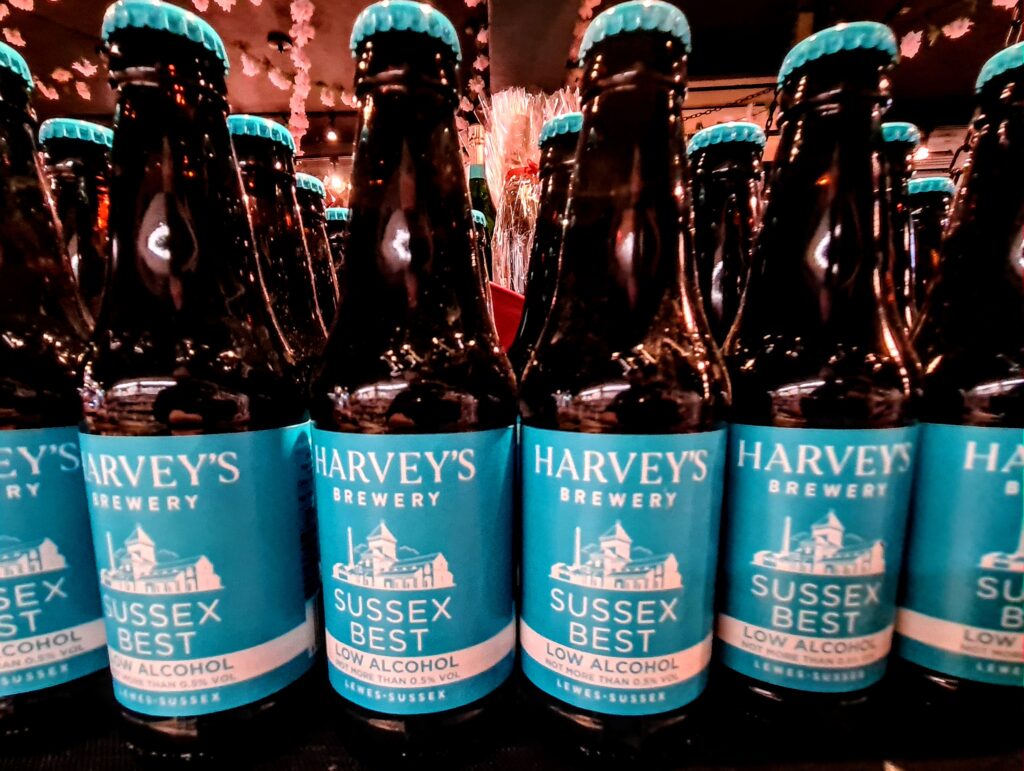
The pubs of the South Downs are often stunning and a few times we have been lucky enough to sit in the pub garden on a hot summer’s afternoon sipping a pint only to hear the unmistakable noise of the Rolls Royce Merlin engine of a Spitfire, as this British icon flies overhead on its return from an airshow or State occasion to Biggin Hill RAF airbase. One even performed a victory roll in the summer of 2020, which I have never seen before in real life nor will see again – they are supposed to be banned from such manoeuvres nowadays given the age of the planes – but what a sight! In an otherwise terrible year, it was a welcome signal.
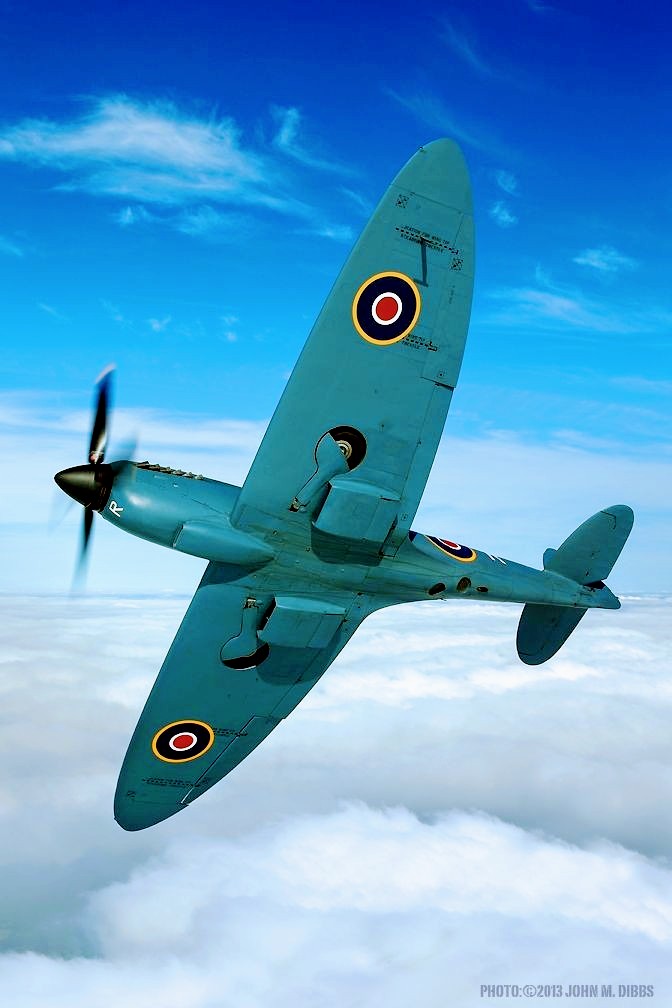
My drinking companion of choice is Dom, or Louis Fairdrop as he styles himself when the booze is working. To his Louis, I become the Baron Ernst von Stollenheim. In the days when you could, we began our imbibing on the allocated day at 0500 in Smithfield where a pint of Porter could be had in the Market Tavern underneath the meat market, and many of the market’s porters availed themselves of this institution. After all, they had been hard at it all night and so were in need of a refreshment. Along with an early morning kickstarter fag, this was the traditional commencement to our Walk of wisdom – an all day and all evening and all…well, as long as we could stand, pub crawl. These are usually themed to take in all the legal pubs of London, or the ancient pubs of the City or, as was the case with the inaugural walk, the pubs along the river Thames. After Smithfield, which is also home to a fantastic pub called the Fox and Anchor, where they purvey a very line in pies, we cabbed to Simpson’s on the Strand for a proper gentleman’s breakfast. With Champagne. And a Bloody Mary.
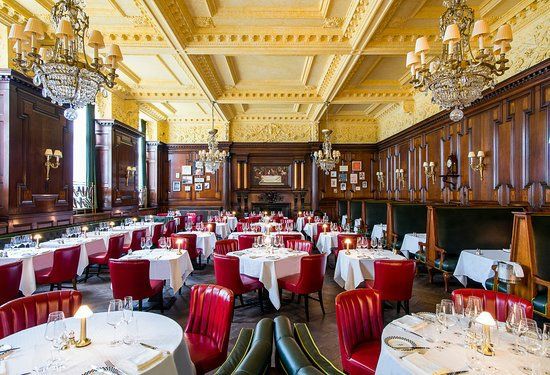
On that first walk, we then ambled along the Embankment to the river boat which took us all the way down to the official start line of our pilgrimage. The prospect of some 21 pubs and inns stretched out before us. It was a glorious prospect. Dom is one of those people where you can gabble and laugh or just sit in companionable silence; he is the quintessence of the Bar Stool Philosopher. We disembarked at Greenwich pier and walked East along the towpath , past the redundant concrete works to the Nelson pub. Opting to take the appropriate drink of the time of day, we began with a pint of bitter and then ambled along to the Yacht, where we had a glass of Madeira, which seemed fitting for the hour. Another pint in the bow windowed seat of The Trafalgar Inn (it is my hope one day to hold a party upstairs in the plush, gold and scarlet upholstered Nelson Room) and then on to Rotherhithe and lunch at the Mayflower. A pint and a bottle of red.
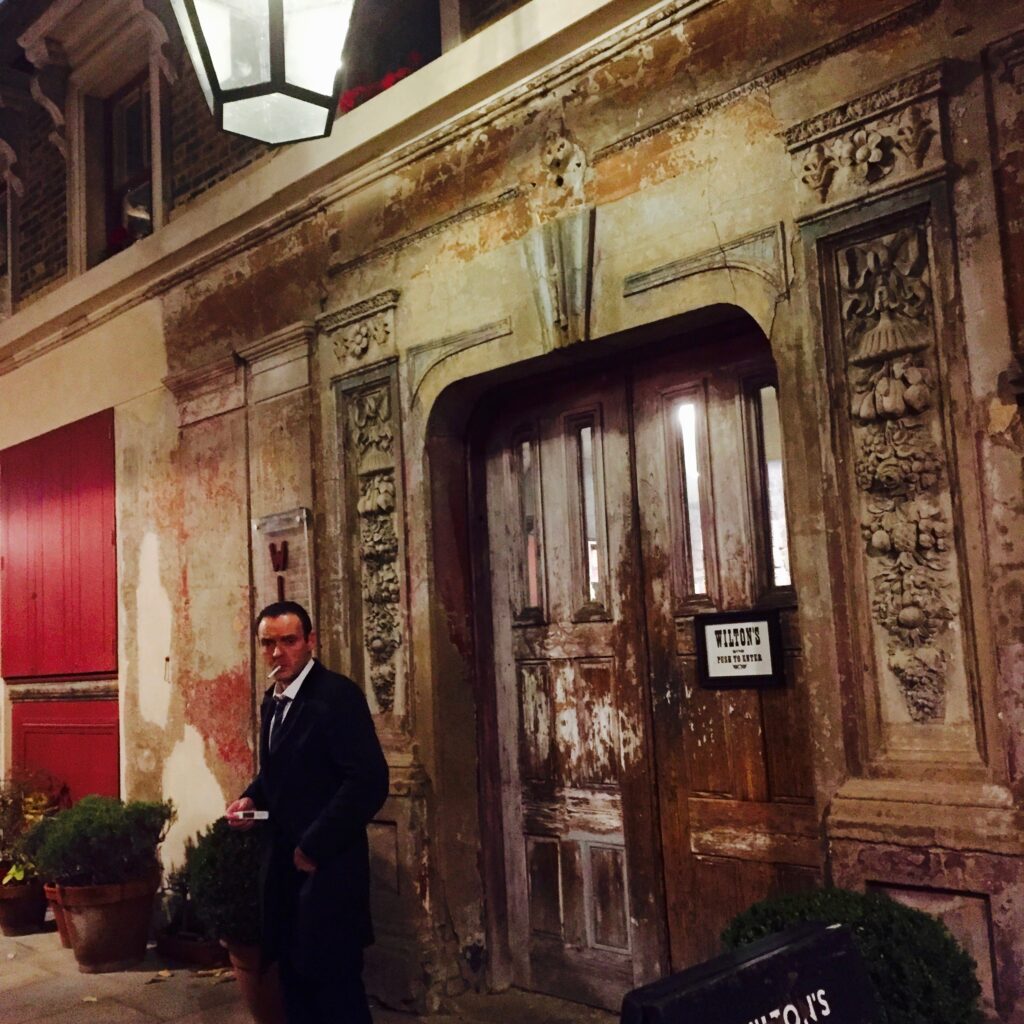
Borough Market and the only Georgian galleried Inn left in London, The George. Another pint. Across the Bridge and another cab ride to Wapping and the notorious pubs of that manor: the Prospect of Whitby, the Grapes in Limehouse, the Captain Kidd, Turner’s Old Star. By now we are quite merry. To Soho and the Crown and Chairman. Some other pubs. A green doored Speakeasy I couldn’t ever find again but which Dom seemed to know the secret password for. And back to the bar at Home House, where we were sharing a bed, Laurel and Hardy style, for the night. Twenty one establishments. And Dom was up and fit as a flea in time to catch the 0720 from King’s Cross. Outstanding behaviour.
This tradition continues, two decades later. Dom “doesn’t do solids” as he puts it, but we have drunk our skins full and I need food to soak up the alcohol. So we often break up the booze with the nicer eating establishments London has to offer: Langan’s Brasserie usually does the trick. We have pubbed in Hammersmith and Chiswick, Clapham and Wandsworth, in the City and in Brighton. So much more to do and so little time…

Work has also taken me on drinking extravaganzas and introduced me to some lovely brews: Budweiser in Prague; Leffe in Bruges; Effes in Istanbul; Tsing Tao in Shanghai; Kirin in Tokyo; Lion lager in Cape Town; Grolsch in Amsterdam; Weissbier in Munich; Piva (live beer) in Russia. This last one, best taken to rehydrate yourself in a Banya (think sauna with a bar) with good company and some snacks. And Guinness in Dublin, of course. But don’t go on St. Patrick’s day – all bars are shut in deference to the Man. All except the bar at Dublin’s main train station where you can buy a drink if you have a ticket for travel that day. My ambition is to make it for Bloom’s Day one 16 June.

Then there are all the holiday beers: Mythos and Fix in the Peloponnese. Phoenix in Mauritius. Wadadli in Antigua. Kalik in Bermuda. Chang and Singha in Thailand. And a little local twist on a French pression when you add Picon, the orange liqueur, which gives you a nice kick. I learnt this last one when working in the French Alps in Morzine and it became my preferred way to drink beer in the winter cold up there in the mountains.

Beer is my friend. The lubrication of sorrow and the enhancer of fun. A pint is a joy. Company enough for one but a welcome addition to any throng. It is a fundamental part of the human story, having been part of our history since about 3500BC. It has been responsible for some horrendous historical blunders, for countless relationship breakups; it has also cemented many marriages, loosed the inhibitions of those born a drink too short. It is a leveller, a companion, a small but potent ally; a dangerous enemy if given control. It can heighten the confidence and gag the articulate. It is a fiend and a lover. It is class in a glass and the dregs of despair. The world always looks rosier through the bottom of a glass that has contained it and it is a marvellous accompaniment to all manner of pleasures. I am a fan. It has given me untold tales as well as told. The madness that lies in its innocuous promise of quenched thirst is celebrated in poetry and plays around the world. But mostly, it has been the common denominator to a lifetime of happy and funny memories. This is to say thank you to all the crafts people from around the world who have produced the liquid lubrication which has oiled the friendship of decades that I have enjoyed. And to all the publicans and bar staff who have poured me a pint, cleared away the empties and replenished the same. Here’s to you all. Cheers.
